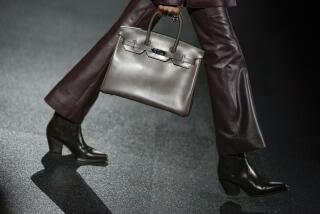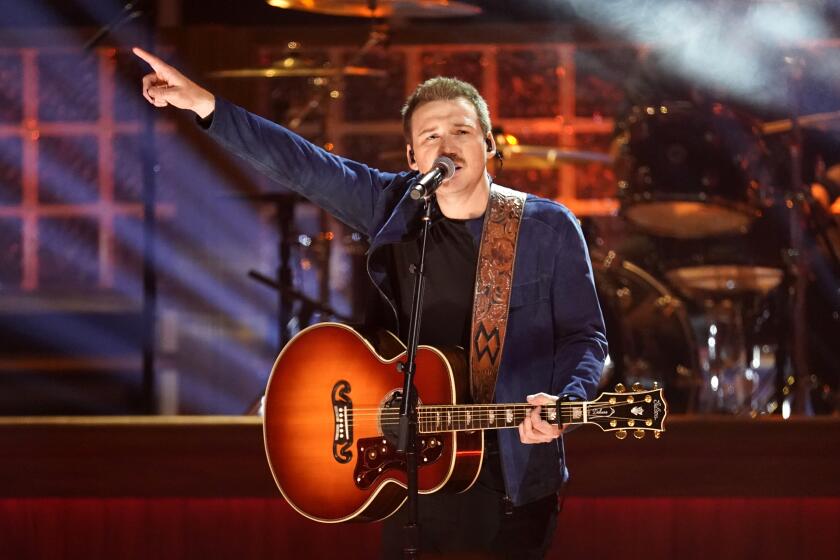How storage lockers and distant relatives change the Vivian Maier case

The story of how the work of photographer Vivian Maier came to light is pretty wondrous: a young real estate agent named John Maloof purchases a box of Maier’s belongings at auction in 2007. The box, it turns out, contains images produced by Maier in the 1950s and ‘60s, many taken in Chicago and its environs, the city where she had lived and worked as a nanny for much of her adult life. And they are stellar: stark black-and-white portraits of rumpled old men, mischievous street urchins and society ladies. Maier is hailed by critics and photographers alike for her keen compositions. Maloof publishes a book of her work and makes a documentary about his discoveries. It is an otherworldly turn of events for a photographer who died, a complete unknown, in 2009.
But as a legal battle over her estate and, ultimately, control over copyright to her work, looms in Illinois, that box of her belongings is now looking like it may have belonged to Pandora.
It is a labyrinthine case, one that probably won’t be resolved any time soon, and may have the effect of keeping Maier’s work out of the public eye for years to come.
Maier died without leaving a will or immediate next of kin, which means that her estate, along with the rights to her photos, would have gone to her closest living relative. As far as anyone knew, that relative was a cousin in France named Sylvain Jaussaud, who figures quite prominently in Maloof’s documentary, “Finding Vivian Maier.”
But a report by Randy Kennedy in The New York Times last week reveals that there might be another cousin in France, a man by the name of Francis Baille, who might also be entitled to status as an heir. And according to the lawyers I interviewed about the case (experts unconnected to Maloof, Jaussaud or Baille), the rights to some of Maier’s work may hinge on a rental agreement she signed for a storage unit — a storage unit on which she later defaulted.
So what happens next? A lot of legal wrangling. Here’s a deep dive into some of what we can expect:
No. 1: Heirs need to be named
As reported in The New York Times, Illinois’ Cook County public adminstrator’s office, the state agency charged with managing the estates of the deceased until rightful heirs are approved, created an estate for Maier back in early July. Now it will be up to the probate court in Illinois to determine the correct heir, or heirs. (Since Maier died in Illinois, her property will be dispensed according to the laws of that state.)
Naming an heir is generally a pretty straightforwad process, says Patty Gerstenblith, who teaches at Chicago’s DePaul University College of Law and is head of the university’s Center for Art, Museum and Cultural Heritage Law, which deals with legal issues surrounding art and artifacts.
“You bring birth certificates, marriage certificates and other documentation that show lineage,” she explains. “The court will then determine who the correct heir is. It will be the closest living relative or relatives.”
Provided that the paperwork is in order.
“In some cases,” Gerstenblith says, “heirship is more complicated because you have family that is more distantly related. This has come up in cases of Nazi looting. The claimant has to prove they are the right heir and that can be quite difficult.”
Assuming all of the documentation is in place in the Maier case, the question of who will get heirship remains: one man or both? In the news reports, both Jaussaud and Baille have been described as Maier’s first cousins once removed. But Gerstenblith says to take these descriptions with a grain of salt until the court has had the opportunity to review the case.
“Often, these characterizations are inaccurate,” she says. “Your first cousin once removed is your first cousin’s child. In this case, until we see the paperwork, we can’t know for sure. If they are both of equal relationship to her, then they will have equal share in the estate.”
The fact that Baille didn’t know until recently that he was related to Maier, as reported in The New York Times, doesn’t have any bearing on the case.
“In the casebook this is described as a ‘laughing heir,’” says Gerstenblith. “It’s people who don’t know the decedent, so they’re not sad that the person has died. Whether Maier knew them or not has no relevance. The law states that heirship goes to the closest living relative.”
No. 2: The court needs to determine what exactly Maier owned at the time of her death
Once heirship is decided, it would seem that control over intellectual property rights would automatically go to that heir — or heirs. But the case of Vivian Maier is infinitely more complex.
In 2007, two years before Maier died, Maloof acquired the first batch of her work from a liquidator who had purchased the contents of five of Maier’s storage lockers. Maier had defaulted on payment on these lockers and their contents had been taken over by the storage house, which sold them to Roger Gunderson, who then sold them at auction to Maloof, a dealer named Jeffrey Goldstein and others.
The storage-house default means that the auctioned objects wouldn’t be governed by estate laws, but by contractual laws within the state of Illinois. And with that, may ride the question of copyright ownership.
Daniel J. Voelker, of Voelker Litigation Group, is an attorney in Chicago who has worked on cases relating to trusts and estates for three decades. He says the status of Maier’s copyright on these particular images may be tied up with the contract she signed with her storage company.
“Usually, you’ll see language in those contracts that says that if you don’t make your payment by a given date, the contents of that storage locker becomes the property of the storage house, and ... all rights, title and interest go to the storage company,” he explains.
Did Maier sign away her “rights” when she signed the agreement with her storage company?
“Without looking at her contract, it’s hard to know,” Voelker says. “But I can’t imagine that these storage houses would have an agreement in which they maintain some aspects of the property, but then other pieces revert back to [the original owner]. They want everything. They want 100%.”
Gerstenblith concurs. “It all depends on the contract with the storage company,” she says.
So if it turns out that Maier signed a contract that granted the storage company all rights to her property, do those rights include copyright? And were those rights transferred to Maloof and other buyers when they acquired the items at auction?
These are the questions that get at the tricky nature of copyright law: Copyright doesn’t automatically transfer with the sale of a physical object. One can own a negative or a print, while not controlling the rights for sale and reproduction. (Just as a reader can own a copy of the L.A. Times, but doesn’t have the authority to reproduce and sell its articles.)
All of this means that in addition to figuring out who Maier’s rightful heirs are, the Illinois court has to determine exactly which objects — and which rights — Maier retained at the time of her death.
This will not be easy. A report published on the website Gapers Block last year indicated that Gunderson, the liquidator who acquired Maier’s belongings from the storage company, purchased five lockers that Maier had defaulted on. The contents of these lockers have since been dispersed to various other dealers and collectors, including Goldstein and Maloof. In other words, there is a lot of stuff floating around out there, stuff whose fate is likely governed by the terms of the agreement that Maier had with the storage company.
However, there are other items that will likely fall under the power of the estate. Because Maier was a pack rat, there were other storage lockers too. These were maintained by one of the families that Maier worked for as a nanny; their contents were distributed after her death, as recounted early on in Maloof’s documentary. Because these items presumably remained in Maier’s ownership at the time of her death, they would then be considered part of her estate, as would any rights associated with them.
The fun part for the court will be figuring out which objects came from the defaulted lockers and which were from lockers that were cleaned out after she died. This will be a game of determining who acquired what, when, and from whom. And then sorting out the question of rights.
In other words: this is going to take a really long time.
No. #3: Other possible problems
Naturally, all of this opens the door to other legal wrangling. The family that maintained the lockers for Maier at the time of her death might seek reimbursement from the estate for the expenses they incurred.
If Maloof loses rights to reproduce and sell Maier’s photos, he might seek to be reimbursed for the time and resources he spent promoting her work. “You’d need to ask how much of the increase in value of these photographs is due to his efforts,” says Gerstenblith. “Because the property only became valuable after her death.”
Then there is the question of Jaussaud, the cousin featured in Maloof’s documentary.
The New York Times reports that Maloof acquired the rights to Maier’s work from Jaussaud. And it’s a fair guess that Goldstein has done the same. He told Hyperallergic back in August that he was in a nondisclosure agreement with a French heir. (It is unknown whether other individuals who own Meier’s work have also bought rights from Jaussaud.)
“[Jaussaud] might be getting a percentage or he might have gotten a one-time payment,” explains Gerstenblith.
If Jaussaud isn’t satisfied with his contract, there is always the possiblity of another lawsuit.
“He might say that he gave up his rights thinking that the photos weren’t worth anything, without knowing that the collectors planned to promote and sell the work, therefore increasing its value,” says Gerstenblith. “However, if Jaussaud seeks to negate his contract, he’d have to establish fraud or misrepresentation in the original contract.”
Moreover, if the intellectual property rights from the defaulted lockers go to the estate, the dealers who acquired the work from these lockers, may try to make a case that Maier abandoned her right to the work when she abandoned her negatives — the source of her work — to the storage company.
“Did she in effect abandon her claim to controlling copyright when she abandoned the only tangible, fixed expression of her creativity?” asks Virginia Rutledge, an art historian and prominent intellectual property lawyer who is based in New York. “That’s an interesting question. And the answer may not be as settled for all cases as some would think.”
“There are some fascinating art world precedents for not asserting copyright,” she adds. “Lawrence Weiner’s ‘public freehold’ concept is one of these.” (Weiner, a conceptual artist from New York, places the phrase ‘public freehold’ on works that he deems as being open to use by others.)
But in these cases, relinquishing copyright is part of the artist’s intent. With Maier gone, it is impossible to know what she would have wanted.
“Giving up copyright is fairly rare,” says Rutledge. “And there is not a regulatory framework for doing this.”
Which means...
...which means that not only will a lot of Maier’s work be tied up in litigation for years, it may not be able to be reproduced in books or shown in art galleries until everything is said and done.
This is beyond unfortunate, and, in many ways, not what copyright law was intended to do.
“Fundamentally, American copyright is intended to drive creativity through circulation,” Rutledge says. “In fact, that is its constitutional mandate. The law incentivizes and protects the artists’s right to benefit from her work in order to promote the progress of the arts and sciences, and therefore build a rich and flourishing public culture.”
This is alluded to in the way that copyright protection has been written into the U.S. Constitution: “The Congress shall have Power ... To promote the Progress of Science and useful Arts, by securing for limited Times to Authors and Inventors the exclusive Right to their respective Writings and Discoveries.” [Italics mine.]
A wonderful ideal. Too bad that, in this case, it’s been turned into a question of power and money by various men, most of whom never even knew Maier to begin with.
Find me on Twitter @cmonstah.
More to Read
The biggest entertainment stories
Get our big stories about Hollywood, film, television, music, arts, culture and more right in your inbox as soon as they publish.
You may occasionally receive promotional content from the Los Angeles Times.







